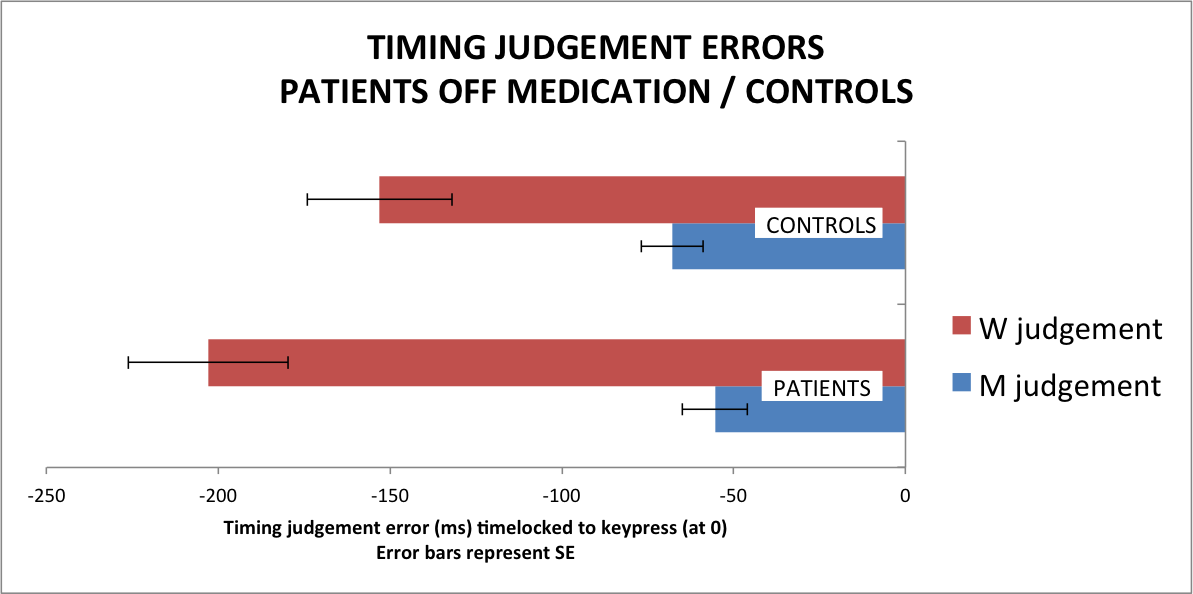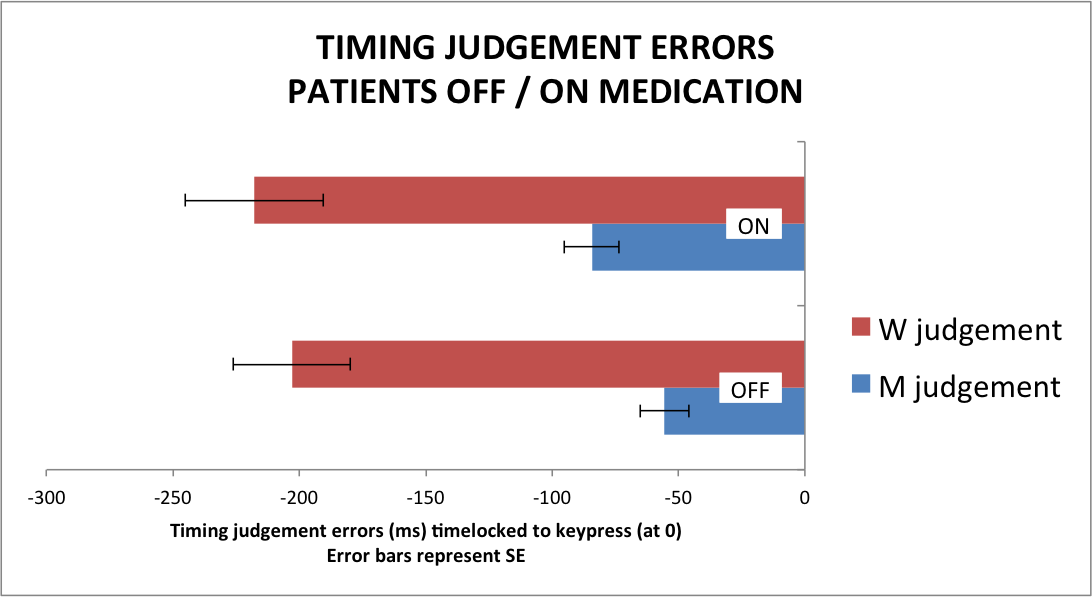Session Information
Date: Wednesday, June 7, 2017
Session Title: Parkinson's Disease: Cognition
Session Time: 1:15pm-2:45pm
Location: Exhibit Hall C
Objective: To investigate the role of dopamine in intention awareness of voluntary actions in patients with Parkinson’s Disease (PD).
Background: Underactivation of the SMA due to dopamine deficiency, as in PD is associated with a reduction of voluntary actions1. In these patients, awareness of intention to act has been shown to be delayed2. However, delayed awareness of intention to act has also been shown in patients with hyperdopaminergic states, as in Tourette’s, and in patients with functional movement disorders. Hence, the role of dopamine in the awareness of the intention to act remains unclear.
Methods: 39 PD patients (27 male; 58±8 yo; stage 1-3 Hoehn & Yahr) and 29 healthy controls (11 male; 59±11 yo) were recruited from University Medical Center Hamburg-Eppendorf. Only PD patients without comorbid neurological or neuropsychiatric disorders, such as dementia or depression, were included.
Participants viewed a clock with a single rotating hand. At a time of their choice, participants pressed a key and the clock stopped after a random interval. Participants were asked to judge where the clock was when they pressed the key (M judgement) or where the clock was when they first had the intention to act (W judgement). Responses were then subtracted from the actual clock position. Action initiation was controlled with EMG. Patients were tested in two conditions (Medication OFF/ON).
Results: A 2×2 mixed ANOVA of judgement errors, with factors group (patients off medication/controls) and task (W/M), showed an effect of task (F(1,64) = 43.337, p < .001) and a significant interaction (F(1,64) = 5.193, p = .026) but no effect of group (F(1,64) = 1.619, p = .208) [figure1].
A 2×2 repeated measures ANOVA of patient judgement errors, with factors task (W/M) and medication (on/off), showed an effect of task (F(1,37) = 33.768, p < .001) and an effect of medication (F(1,37) = 6.133, p = .018) but no interaction (F(1,64) = .909, p = .346) [figure2]. Patients had significantly lower scores in the motor subscale of the UPDRS while OFF medication (18±8) compared to ON (28±11) (p < 0.001).
Conclusions: These results may show distinct effects of pathology and dopamine on the accumulation of evidence prior to initiating an action. The effect of pathology may be to alter the rate of evidence accumulation and the effect of dopamine to lower the threshold for intention awareness. In patients this would result in a longer W-M interval and an early W judgement as observed here.
References: 1. Jahanshahi, M., Jenkins, I.H., Brown, R.G., Marsden, C.D., Passingham, R.E. & Brooks, D.J. (1995) Self-initiated versus externally triggered movements. I. An investigation using measurement of regional cerebral blood flow with PET and movement-related potentials in normal and Parkinson’s disease subjects. Brain, 118 ( Pt 4), 913-933.
2. Tabu, H., Aso, T., Matsuhashi, M., Ueki, Y., Takahashi, R., Fukuyama, H., Shibasaki, H. & Mima, T. (2015) Parkinson’s disease patients showed delayed awareness of motor intention. Neurosci Res, 95, 74-77.
To cite this abstract in AMA style:
S. Di Costa, E. Barow, C. Moll, U. Hidding, O. Fründt, C. Gerloff, R. Erro, M. Pötter-Nerger, C. Buhmann, P. Haggard, C. Ganos. Intention Awareness in Parkinson’s Disease [abstract]. Mov Disord. 2017; 32 (suppl 2). https://www.mdsabstracts.org/abstract/intention-awareness-in-parkinsons-disease/. Accessed April 2, 2025.« Back to 2017 International Congress
MDS Abstracts - https://www.mdsabstracts.org/abstract/intention-awareness-in-parkinsons-disease/


